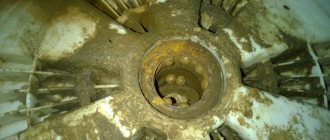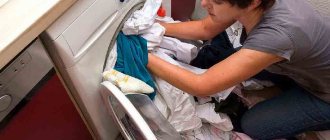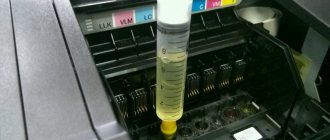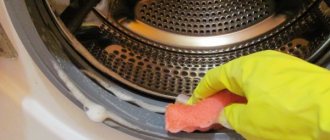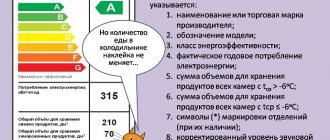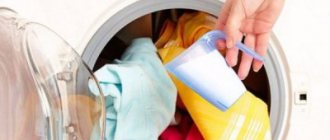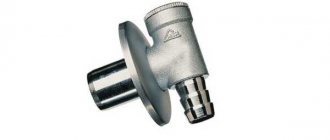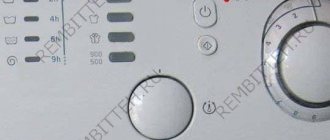Many users of washing machines sooner or later encounter such an unpleasant phenomenon as squeaking during operation. This problem can occur both throughout the washing program and during certain periods of it (for example, only during rinsing and spinning). If this malfunction is discovered after purchase, it is probably due to a defect or some kind of assembly error. Contact the seller immediately so that your car can be repaired under warranty, replaced with a new one, or your money returned. Also, such a problem may occur immediately after replacing any parts. In this case, you should double-check the correctness of the repair (if you did the repair yourself) or contact the technician who carried out the repair to correct your possible mistake.
However, if the machine has been working properly for a long time and suddenly cracks, the most likely reason is that some parts have worn out or the fastenings have become loose.
Damage to shock absorbers
Shock absorbers fix the tank in the washing machine from below, dampening vibrations during washing and spinning. The more often you use the equipment, the more you overload it, the faster the shock absorbers will fail. Even under ideal operating conditions, shock absorbers wear out: the lubricant dries out, the piston becomes loose and moves freely. Therefore, during the spin cycle, the tank will begin to dangle, the machine will jump around the bathtub, the intensity of vibrations will increase, and the drum will begin to knock.
It is necessary to change both shock absorbers, then the load will be distributed evenly. If you change only one, the new spare part will quickly break and the problem will recur.
In some washing machines, dampers (shock absorbers) are accessible from below, and in others from above. The specialist unscrews the bolts securing the shock absorbers to the body, disconnects them and replaces them with new ones.
- Remove the top cover of the machine by unscrewing the fixing fasteners on the back of the case and sliding the top panel.
- Remove the powder container and the lower plastic panel that covers the drain filter.
- Dismantles the control panel by unscrewing the fixing fasteners and disconnecting the cables.
- Remove the rubber cuff.
- Unscrew the bolts securing the front wall and remove it.
Once access to the shock absorbers is opened, the old spare parts are dismantled, new ones are installed, and the unit is assembled in the reverse order.
If you are not afraid to disassemble and repair equipment yourself, you can do it all yourself.
This is interesting: Do-it-yourself air conditioner repair: main faults and their elimination
What causes your washing machine drum to squeak?
| What causes the error? | The essence of the problem | Master's recommendations |
| The machine creaks both during the wash and during the spin cycle - at any time during the program | 1. The springs holding the tank may have worn out. The springs lose their elasticity over time, so the tank swings on stretched springs, which is why you hear the drum creaking. 2. The shock absorbers (dampers), which are designed in the design of the machine to absorb strong vibrations, have served their purpose. Long operation of the machine or its incorrect installation causes a load imbalance between both dampers, which is why creaking occurs. 3. The drive belt is worn out. Over time or due to heavy loads, the belt stretches and can slip, which is why you hear a squeak. | Shock absorbers and dampers are changed in pairs. The belt also needs to be replaced. |
| The squeak is heard only during the spin cycle | Perhaps something is stuck between the body of the machine and the tank, which is creating an unpleasant squeaking noise. But there could also be another error. We are talking about the imbalance of the drum, which over the years begins to “walk”, rub against the seals, cuff and other parts of the device and creak loudly. There is a third reason for the strange squeaking sound when the machine spins clothes - when the body unwinds. If the bolts are loose and the housing parts are displaced, a squeaking sound will be heard during the spin cycle. | If we are talking about a third-party item, then you need to disassemble the machine and eliminate the “noisy” debris. And if there is an imbalance, then you need to secure the shaft mounts. In the case of an untwisted body, all fasteners need to be adjusted. |
| In the top-loading model, the drum squeaks during the spin stage | In “vertical washing machines” the tank is located in close proximity to the machine body. If the fastenings are even a little loose, then the drum will rub against other parts and creak. | Need to disassemble the machine, check and adjust the fasteners |
| Metallic creaking during spin cycle | The shaft bearing may have broken. The degree of damage can range from rust to complete deformation of the part. | All bearings need urgent replacement. |
Useful video:
If our advice helped you and the machine stopped creaking, congratulations and we wish you many years of trouble-free operation of the washing machine. But if the breakdown is still there and the creaking is interfering with your life, then it’s time to turn to a professional. Moreover, we can provide it to you - call a good technician to your home and he will make urgent repairs, accurately determining the cause of the breakdown.
How to reliably remove a squeak?
Masters have several methods in their arsenal to eliminate squeaking when the drum rotates. Not all of them can be called simple and safe. So, some advise loosening the clamps, removing the cuff and re-adjusting its position. However, it will be problematic for a housewife to do this at home. Firstly, the method is not suitable for all models of washing machines, and secondly, the process of dismantling and tightening the cuffs is a rather troublesome procedure. It is difficult to determine the correct position for the seal without experience.
The second option is even riskier. According to it, it is recommended to first remove the cuff and then trim the edges clinging to the drum with a stationery knife. But if an experienced craftsman can determine the place of friction and easily return the rubber to the hatch, then an ordinary user is more likely to ruin it by cutting it in the wrong place. But this does not mean that without service you cannot get rid of the sound of friction on rubber. There is a safe and relatively easy repair option. The instructions are as follows:
- go to a hardware store;
- buy sandpaper with a grit of at least 60 units (such sandpaper costs a penny);
- return to the machine and open the hatch;
- Fold the sandpaper in half with the grainy side facing out;
- insert the paper between the drum and the cuff:
- holding the sandpaper, rotate the drum until the protruding edge of the rubber is erased.
To remove the “catch”, you will have to spin the drum about 100-120 times. This will take time, but the risks of damage to the cuff and the machine itself are minimal. Afterwards, all that remains is to run the test cycle and listen: if the squeak disappears, then the problem is solved; if not, we repeat the procedure.
What can cause grinding noise in a washing machine?
For an accurate diagnosis, it is necessary to disassemble the unit, remove the cover and side parts, and carry out a detailed diagnosis. Each washing machine manufacturer has certain weaknesses that can cause an unpleasant grinding noise. For example, in Indesit technology, springs and shock absorbers often fail. This is the reason why the drum in the washing machine squeaks.
Depending on at what stage of washing the machine makes a grinding noise, you can judge the nature of the breakdown.
Laundry loading stage
How to understand the cause of a strange sound in a washing machine
If the washing machine squeaks when the drum rotates, the most common cause may be a clogged cuff. Small pieces of laundry or other large debris could get here. In this case, you need to carefully bend the rubber seal and clean it around the perimeter. If after cleaning the unpleasant sound remains, the reason lies much deeper, and you need to call a qualified specialist.
Place of cuff blockage
Why does squeaking occur during the washing and spinning phase?
If the washing machine squeaks when washing, the table below will help you determine the cause of the breakdown and understand how to fix it.
| Cause | What caused | How to fix |
| The drive belt is worn out | This problem occurs in many units after a long period of operation. The second reason may be frequent overloading of the washing machine. This causes too much tension on the belt, which subsequently weakens and stretches, making a squeaking noise while the machine is running. This is the most common problem with non-direct drive machines, such as some Indesit models. | Depending on the condition of the belt, it is necessary to adjust the tension or completely replace this element. |
| The springs that hold the tank in place are worn out | Over time, the springs may lose their elasticity and do not hold the tank well while the machine is running. Therefore, it begins to dangle, and creaking occurs due to friction of the tank at its connection with the body. | Replacing both springs with new parts |
| Shock absorbers that absorb vibrations have failed | This problem may be caused by the installation of equipment not level, and there is an uneven load on the shock absorbers. This causes rapid wear, and when overstretched, an unpleasant squeaking sound occurs. Another cause of wear can be long-term use. Each part has its own expiration date, and after it expires it begins to wear out. | Replacement of both shock absorbers. |
It should be noted that in direct drive washing machines, the motor is connected directly to the drum and there are no drive belts in the design (for example, LG devices). This significantly reduces the list of causes of possible breakdown.
It is important to understand that a washing machine is a complex mechanism. Therefore, you should not try to fix the breakdown yourself if you lack certain skills. Trying to repair the equipment yourself can only make the problem worse.
Call the master
Springs and shock absorbers
Springs and shock absorbers can cause the washing machine to squeak during washing and especially spinning. The springs themselves may squeak . The springs are fixed at the top in special holes. During washing, they can rub against their mounting holes and make unpleasant noise. This malfunction is not critical and can be easily corrected.
In order to determine that the cause of the squeaking is in the springs, remove the top cover from the washing machine and run the wash without it. During washing, when the squeaking starts, hold the springs at their connection with the mounting hole (just press with your hand). If the squeak disappears, then this is the reason. To eliminate squeaking, you can simply lubricate the springs in these places using any lubricant.
The second option is wear of the springs or shock absorbers , as a result of which the tank sways during washing and comes into contact with the walls of the washing machine, which causes creaking. You can run the wash without the top cover and see if the tank is rubbing against the walls of the washing machine and what causes this malfunction. Inspect the shock absorbers and springs; they should not be damaged. The shock absorbers must be well tightened and of course they must absorb shock. If they have too much travel and are not doing their job, replace them.
Why is there an unpleasant sound when spinning?
If the washing machine squeaks during the spin cycle, the reasons may include factors such as:
- Drum imbalance. It is a consequence of the weakening of the drum shaft, which causes free movement during spinning. In this case, the drum begins to wobble in different directions at high speeds, friction occurs with various parts (cuff, oil seals, etc.) and, as a result, creaking occurs. To fix the problem, you need to adjust the drum shaft mount.
- A foreign object has gotten between the tank and the body. This problem often occurs in top-loading machines. Small laundry or foreign objects may jump out of the drum and create friction at high speeds. The foreign object must be removed, otherwise it may cause the drum to jam and cause more serious damage.
- Failure to secure parts. In machines of poor quality, the mounting bolts may weaken over time and cause squeaking during spinning. In such a situation, a thorough diagnosis should be carried out and all fasteners in the household appliance should be adjusted.
Another reason for the squeaking of any top-loading washing machine can be the failure of the shaft bearings. Parts need to be replaced urgently. Otherwise, this may lead to additional violations of the integrity of other parts.
Top loading washing machine
If a squeak occurs at any stage of washing, it is important to carry out diagnostics as soon as possible, establish the cause and eliminate it. Otherwise, the breakdown may worsen and completely damage the washing machine. It is best to contact a service center or call a qualified technician for repairs.
This is interesting: DIY vacuum cleaner repair: disassembly instructions
Metallic squeak when spinning
At the junction of the shaft and the tank, bearings , on which rubber seals are put on. They protect these parts from water and are treated with moisture-resistant lubricant. Sometimes these seals become damaged or dry out, then the bearings begin to get wet when washed and, as a result, rust and squeak.
In order to make sure that the cause of the sound is indeed rusted bearings, the machine will have to be disassembled and the unusable parts replaced. It is better to do this by a service center specialist.
—
Main reasons
There are several reasons why the drum in a washing machine knocks during the spin cycle. This may indicate that:
- laundry in the centrifuge is distributed unevenly;
- a foreign object got inside;
- the machine is installed incorrectly;
- the spring mechanism has failed;
- the counterweight is broken;
- bearings are worn out;
- The power filter has come off.
You need to take certain actions depending on the cause of the knocking.
This problem is typical for older machines. In them, when washing and spinning, things do not straighten out, but clump together. In order for the centrifuge to stop knocking, when loading laundry, you need to lay it out evenly, without overloading the drum. It is also advisable to wash bedding and clothing separately.
Sometimes, when operating the machine, small objects fall out through the holes in the centrifuge into the space between it and the outer tank, for example, a bra wire, a button, or a small item that might have fallen out of your pockets. In this case, in order to remove a foreign object, if it cannot be reached through the door cuff, the device will have to be disassembled.
Be sure to read:
Why doesn't the washing machine drain water and spin clothes?
If errors were made during the installation of equipment, then in accelerated operation this is especially noticeable. In this case, it is necessary to check the correct location of the unit and make the necessary adjustments. In order to determine whether the car is level, you can use a level. If distortions are detected, it can be moved to a more even surface. In some models, the position can also be adjusted using screw-in and screw-out legs.
Shock absorber wear
To fix internal damage, you will most likely have to contact a specialist. The springs that ensure smooth rotation of the drum become unusable due to prolonged or intense use, which causes excessive knocking. Replacing the shock-absorbing mechanism will solve this problem.
Counterweight failure
Another problematic part that causes the washing machine to start knocking can be the counterweight - a special weight designed to balance the moving structure during operation. If noise and rattling occur during the washing process, the reason may lie in a loose balancer mount. To eliminate this drawback, it is necessary to disassemble the body of the washing machine and adjust the position of the counterweight.
Bearing wear
If the washing machine is used for a long time or in violation of the general rules, then the drum bearings are also subject to wear, which ultimately leads to creaking and unwanted vibration. The bearing mechanism is replaced taking into account the model of the unit and its functional features.
A typical element of all models is a surge protector. It is located behind the back cover and serves to equalize electrical voltage. When the washing machine is operating, this part may become detached and knock on the body and internal parts. For repairs, the back panel is removed, after which the filter is screwed into place using new fasteners.
Be sure to read:
Water flows into the washing machine when it is turned off: reasons and what to do
We suggest you read: Washing suede sneakers: dry cleaning or in the washing machine
It is not recommended to try to repair serious faults at home, as this risks damaging fasteners, the tank cross and other parts. However, if you notice excessive noise or shaking during washing, follow these steps:
- Switch the machine to spin mode and after it has drained the water, open the drum and remove some of the laundry. Then turn it on again. If the knocking and vibration stop, then the problem was overload.
- Start the unit at idle speed, then turn on the spin program. If the centrifuge continues to rattle, then the problem is most likely a malfunction of the internal mechanisms.
- Bend the hatch cuff and inspect the space between the tank and the drum. If there is a foreign object there, try to remove it.
- Open the filter hole by first inserting the tray. Clean it of small debris.
A washing machine is a piece of equipment that is used almost every day. Even if you take care of the washing machine and treat it with care, over time the parts wear out and require replacement.
Main causes of noise:
- The transport bolts have not been removed.
- The bearings have failed or fallen apart.
- The presence of a foreign object between the drum and the wall.
- The drum pulley is loose.
- The counterweight is poorly secured.
- The hatch needs replacing the seal.
- The machine is not installed correctly.
To repair the unit, you need to know the exact cause of the noise. To do this, you should listen to the nature of the extraneous sound, whether it increases during greater load. Repairing equipment at home is not always a justified idea.
Why is the washing machine still cracking?
Sometimes crackling and squeaking noises are heard from a machine that has no technical defects. The cause is a foreign object that has gotten into the inside of the unit. These could be small items of clothing, buttons, coins, clumps of pet hair, large lint from fabrics, etc. All this debris prevents the drum from rotating and causes a grinding noise that intensifies during the spin cycle.
To get rid of unpleasant sound and prevent more serious malfunctions, you need to remove foreign objects and debris. To do this, you need to remove the lid or wall of the machine when it is turned off, and get to the compartment where the heating element is located: most likely, foreign bodies are located there.
The device may also squeak due to small items caught in the rubber cuff. They are easy to detect and remove yourself. At the same time, it is worth checking the condition of the seal: if it is cracked and stretched, it does not cover the hatch tightly, which can also cause squeaking.
Spring failure
If the washing machine makes squeaking and knocking noises, and vibrates during the spin cycle, the drum is probably lowered or warped, so it rubs and chews the rubber of the hatch seal. The spring flies off, bends or bursts. The tank is held in place by two or four springs, depending on the SM model. If one of the springs comes off, the balance is disturbed, and intense play occurs during the spin cycle.
Foreign objects and improper installation
If the washing machine starts knocking during washing for the first time, do not panic. You need to listen to the sound being made. The reasons for such “musical accompaniment” can be quite banal. Items of clothing that are currently being washed can knock and ring. You need to remember what things are in the washing machine:
- Large buttons or metal elements on clothing may knock on the hatch glass or drum;
- coins or keys spilled out of pockets that they forgot to take out before starting the wash.
To avoid this, you should always carefully check your pockets, and turn your clothes inside out or wash them in special bags.
If during the first wash you hear an extraneous noise in the new washing machine, it is possible that the transport bolts have not been unscrewed. When purchasing, the seller always focuses on this, but when they get home, many completely forget about everything. If this is the cause of the grinding noise, then the sound can be quite loud, and the machine can even move due to strong vibration.
This problem can be easily fixed. To do this, you just need to unscrew the bolts and the machine will work as expected.
Another reason could be improper installation of the unit. In such cases, noise cannot be avoided.
If the washing machine is knocking and you cannot solve it yourself, it is better to call a specialist and not use it for now.
We invite you to read Cheese at night, the opinion of nutritionists
So what are the reasons for a washing machine squeaking during washing and spinning?
The reason for the squeaking in the washing machine?
Worn out one or both springs. The tank of the machine hangs on special spring mounts, which during operation lose their original properties. The places where they connect to other parts of the machine begin to creak. Both need to be replaced.- Shock absorber wear occurs when the load on the shock absorbers is unevenly distributed; both need to be replaced. The reasons may be long-term operation or misalignment in the installation.
- Have you noticed that the drum in the washing machine is squeaking? Disassembling the machine cannot be avoided. In some cases, the seal may be damaged or dry out, then the bearings may rust and make squeaking or knocking noises. The reason may be wear of the drive belt from careless and long-term use of the machine, as well as from frequent overloads. It has become stretched or weakened and needs to be replaced. In rare cases, it can be adjusted.
Let's figure out why you hear a squeaking sound in the washing machine during the spin cycle:
- This can happen when random objects hit and rub against the tank and other parts. For example, a coin or sock can get through the hatch cuff. This item will not only prevent the tank from rotating freely, but will also jam it during further use.
- Creaking in the drum, especially often in Indesit or Candy brand washing machines, is due to its imbalance. This happens after prolonged use, when the fasteners wear out, the shaft touches any part of the machine, and this creates a creaking sound. This problem can be solved by replacing the drum shaft mounts.
- It happens that during the spin cycle, loose parts of the washing machine body creak. A specialist will check and tighten all housing fasteners.
- Often a narrow machine makes a creaking noise when the drum rotates due to the close proximity of the main parts and loose tank fasteners. The solution to this problem is also diagnostics and adjustment of fasteners.
If a metallic sound occurs along with the squeaking noise, you will most likely have to replace all the shaft bearings.
TOP stores of washing machines and household appliances:
- mvideo.ru / - household appliances store, large catalog of washing machines
- holodilnik.ru – Inexpensive store of household appliances.
- techport.ru - profitable modern online store of household appliances
- citilink.ru is a modern online store of household appliances and electronics, cheaper than offline stores!
- ru.aliexpress.com - spare parts for washing machines
Repair
Disconnect from network
Disconnect the washing machine from the electrical outlet.
Foreign body
A small piece of laundry (for example, a scarf) can penetrate between the drum and the cuff of the hatch during washing, end up in the tank, get stuck in a narrow place and make an extraneous squeaking sound. You can remove a foreign piece of laundry from the tank through the hole for the heating element.
Hatch cuff
In some models of washing machines, the rubber cuff is located very close to the rotating drum and can make a squeaking noise when lint from clothes and laundry accumulates on it.
In this case, it is enough to clean the cuff around the perimeter, in the place where it is close to the drum.
Drive belt
Over the years of operation, the drive belt can stretch, slip and creak. Extraneous sound can also be caused by improper tension when installing the belt. To fix it, you need to tighten the belt using the engine or replace it.
Secure the drum
It happens that the fastening of the drum shaft is weakened, then when it rotates, it has a free lateral movement and friction occurs with the cuff, with the tank seal and other parts. To eliminate the malfunction, simply tighten the bolt or nut securing the drum shaft tightly.
Tank and body
In narrow washing machines, the tank is located close to the body and in certain cases may come into contact with the walls of the body or other parts and elements during spinning. The cause may be weakening shock absorbers, overload or imbalance. It is also necessary to check all drum fastenings, including springs.
Housing parts
The various parts of the washing machine body are disassembled. Therefore, if the screws are not securely fastened, the side walls can move relative to each other and produce squeaking during the spin cycle. To fix it, you need to tighten the screws more tightly, and if the thread is twisted, then use a larger diameter.
Malfunction of bearings and seal
At first, a quiet extraneous sound will appear during washing, spinning, even when manually turning the drum. Over time, the sound will intensify, and a strong buzzing sound can be heard during the spin cycle. Rust streaks are visible under the CM on the tank. The laundry does not wring well, it is covered in stains from oil and rust.
Why is this happening? Over time, the seal becomes less airtight, water appears in the bearings, the lubricant is washed off and the balls in the bearings become rusty and destroyed. As the deformation progresses, the grinding noise of the rotating drum will intensify. Water will also start to drip through the bearings at the back of the drum. If water gets on a running motor, it will cause a short circuit and knock out the machine, causing the motor to smoke.
If you do not change the bearing and oil seal when these symptoms occur, the crosspiece, caliper and tank will become damaged over time and it will be much more expensive to repair the washing machine. In LG models with direct drive, drum play will damage the Hall sensor, so you need to urgently call a specialist.
Stages of the technician’s work when replacing a bearing:
- Unscrew and remove all bolts on the rear panel.
- Removing the dispenser.
- Removing the control unit.
- Removing blocking.
- Removing the remaining fixing parts, removing the front panel.
- Loosening the clamp.
- Dismantling the counterweight and tubular electric heater.
- Disconnecting all cables, pipes, and belts from the tank.
- Dismantling the motor, after which the tank and drum are removed.
- The cuff (rubber seal) is removed.
- The tank is installed so that the pulley is accessible, the bolts securing the pulley are unscrewed, which is also dismantled.
- The shaft is knocked out, after which the bolts connecting the two parts of the tank are unscrewed, which are also separated.
- Old grease and dirt adhering to the bearing are removed.
- The bearing is knocked out, the seals are removed.
- The space is wiped and lubricated with lubricant.
- New seals with bearings are installed.
When the work is completed, the specialist will assemble the structure in the reverse order. Carrying out this procedure on your own without special tools and proper skills is very problematic.
Failure of one of the components of the washing machine
One of the causes of noise in the washing machine is the activator clamp. In order to eliminate this problem, it is enough to remove the laundry and disassemble the activator. You need to make sure that there is no deflection. It's worth trying to correct the gap between the disk and the tank. Check the suitability of the activator axis.
If the electric motor hums but does not rotate, then most likely the activator assembly is skewed, and the disk itself clings to the divider, grille or bottom of the washing tub.
An unscrewed surge protector can also create extraneous sounds during operation. It protects the car from current surges. To eliminate extraneous noise, you will need to fix the filter; in some cases, it is worth replacing the fasteners.
If the washing machine rattles during the spin cycle, and you can also hear grinding noises and vibrations, the shaft bearing has most likely failed. If the unit has been operating for more than one year, then this is normal and after completely replacing the bearings and seals it will work as usual.
If you have no experience in disassembling and assembling washing machines, then it is better to seek help from a specialist. This breakdown is accompanied by almost complete disassembly of the equipment. If mistakes are made, irreparable damage is possible, after which the unit will be useless and cannot be repaired.
If the bearings were not replaced on time, and the washing machine creaks, hums and rumbles as before takeoff, then the crosspieces (the parts on which the drum is supported) will also have to be changed. And this significantly increases the cost of repairs.
The shock absorber is located at the bottom of the household appliance and is designed to reduce vibration during operation. To check the functionality of the part you need to:
- Remove the top cover by unscrewing the screws.
- Press on the top of the tank so that it sinks 6 - 7 centimeters.
- Let go quickly.
- If the tank returns to its original position, then everything is fine. If it remains bent or rises more on one side and less on the other, repairs are needed.
We invite you to familiarize yourself with How to beautifully arrange a dacha
The main signs of failure before “opening”:
- In the “washing” mode, the unit creaks and knocks.
- The drum rotates slowly (perhaps there is no lubrication in the shock absorber).
Repairing parts in such cases is not always justified. A repaired part, as practice shows, does not last long. It is recommended to completely replace damaged elements or the entire part.
Do-it-yourself repairs will require skill, care and caution. To get to the shock absorber, you need to get to the very bottom of the car. All parts must be removed carefully so as not to damage adjacent elements and wiring.
What to do if the washing machine makes a squeaking noise? Method of finding the cause, we fix it with our own hands.
In the world of washing machines, there are price leaders: Miele and Electrolux, Bosch and Whirlpool; there are middling ones: Ariston Hotpoint and Siemens, Zanussi and Samsung, Indesit and Candy. In addition, very decent household appliances are supplied to the Russian household goods market by such manufacturers as Gorenje and Daewoo Electronics, LG Life's Good and Ardo, AEG and BEKO, which occupy their own price niche. But the fact is that no matter how high-quality the assembly and components are, any washing machine may experience an incomplete failure. One of these categories of failures is the appearance of squeaks from the inside of the washing machine. We will tell you in this article how to find the cause of a low-frequency or high-frequency squeak, based on the experience of specialists. For offline consultations on purchasing spare parts for a broken washing machine, please call the numbers listed on the website 8(495) 782-66-02.The collection of sounds made by a faulty washing machine includes a squeaking sound. The washing machine creaks, making sounds as if some parts were rubbing against each other. In many cases, the main culprit and source of squeaking is the rotating drum of the washing machine. To find out where it actually comes from, remove the top cover, side walls and listen carefully.
Those who repair a broken or malfunctioning washing machine with their own hands need spare parts for repair or repair: hatch cuffs and tanks with a drum - you have the opportunity to buy these parts at the “Your-Master” warranty workshop for cash wholesale or retail.
By calling a Moscow phone number, you can select a burnt or broken part. Operators will make an approximate calculation of the cost of new components and provide competent advice on the selection of analogues or alternatives.
The warehouse has various parts or similar components of excellent quality. A guarantee for all spare parts and components is an integral part of the “Vash-master” service. For those who are renovating or repairing a home or in the bathroom of a country cottage, kitchen or repair shop in the Moscow region, a service is available - delivery of spare parts for washing machines by courier. Delivery is made the next day after the call or the same day without extra charge within Moscow and the Moscow region.
Symptoms of the “disease”:
- both during normal rotation and during the spin process, a creaking sound is heard.
Possible causes of the “disease”:
— there was a piece of laundry between the drum and the tub; — particles of wool and lint have stuck to the rubber cuff of the hatch; — the drive belt is loose; — the drum shaft fastening has become loose; — there is friction between the tank and the body; — there is friction between parts of the body; — the places where the springs are attached creak.
Elimination - technique:
* Before starting work, turn off the power to the washing machine by unplugging it from the mains.
* During the washing process, some small item (for example, a handkerchief) or a piece of laundry may end up in the space between the hatch cuff and the drum and cause a squeak. To remove a foreign body
, take out the heating element and gain access to it through this hole.
* The location of the hatch cuff in a number of washing machine models is the space in close proximity to the rotating drum. tiny particles of tissue , accumulate on it
, this can become a source of squeaking.
If this is the reason, then clean the rubber cuff around the perimeter in the places closest to the drum.
* Drive belt
over a long period of use, the washing machine may lose its original hardness; having stretched out, it begins to slip and make a creaking sound. Another reason related to the belt is that it was not tensioned correctly during installation. In this case, the situation can be corrected using the engine by tightening the belt. It may need to be replaced.
, the drum shaft becomes loose
. This leads to the occurrence of free lateral movement during rotation and its friction with such parts as the tank seal, cuff, etc. It is not difficult to correct the situation - tightly tighten the nut or bolt that secures the drum shaft mounts.
* If the washing machine is narrow, then the tank and body are at a very small distance from each other. It happens that during the spin process the tank touches the walls of the housing or other parts - due to imbalance or overload or weakening of the shock absorbers. Don't overlook all the drum mounts
including springs.
* The washing machine body is a structure assembled from separate parts. If the screws are not tightened enough
tightly, then the walls may shift relative to each other, and during the spin process this may cause squeaking. In this situation, simply tighten the screws more tightly. In case of twisted threads, use a larger diameter.
* The source of squeaking can in some cases be the springs on which it rests
the upper part of the tank - or rather, creaking sounds when the tank moves are made by the places where the springs are attached to the tank and the body.
You can find out exactly where the extraneous sounds are coming from by removing the top cover and pressing the tank body a couple of times. If the springs still creak, lubricate the place where they are attached.
It is easier and cheaper to buy spare parts for a washing machine in the Moscow region and Moscow from the spare parts supplier Vash-Master. Our company has entered into long-term contracts for the import of spare parts to Russia directly from the production facilities of foreign manufacturers of components and parts.
We sell, at no extra charge, wholesale and retail, assorted spare parts for LG and Ardo washing machines with home delivery in the cities of the north-eastern Moscow region: Mytishchi and Pushkino, Balashikha and Yubileiny, Korolev and Shchelkovo. Call to buy spare parts by phone, the operators will tell you which parts are in stock and which washing machine spare parts need to be ordered.
Foreign object entry
During washing, a knocking sound is sometimes heard due to the presence of some foreign object in the tank. These could be keys, coins, buttons, rhinestones, or a bra wire. They can even pierce the tank at high speeds, so the device will jam and water will leak onto the floor. After removing foreign objects, it is necessary to check the parts for integrity and serviceability.
If you act incorrectly and connect the device to the system incorrectly, important parts of the washing machine will fail. Therefore, it is better not to carry out independent repairs, but to entrust the matter to a specialist.
Crackling sound in the washing machine when the drum rotates
The washing machine is the main friend and helper of every family. Breakdowns are not excluded, the main thing is to take timely measures. provides a full range of services to Moscow residents. Repairs are carried out by specialists with at least 5 years of experience, so the work is carried out at a high level. We leave on the day of your request or at any convenient time. Repair of washing machines is carried out with a guarantee - the client receives a receipt for the work performed and within the specified period can apply to have the problem resolved. Diagnostics are free.
